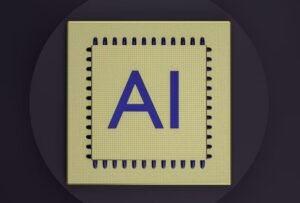Neural Network vs Machine Learning
In the world of artificial intelligence (AI) and data analysis, Neural Networks and Machine Learning are two popular methods that are widely used to solve complex problems. While both approaches have their own distinct characteristics, they also share some similarities. Understanding the differences and similarities between Neural Networks and Machine Learning can help you choose the right approach for your specific task.
Key Takeaways:
- Neural networks and machine learning are both methods used to solve complex problems in the field of AI and data analysis.
- Neural networks are a subset of machine learning, specifically designed to mimic the human brain’s decision-making process.
- Machine learning algorithms learn from data and make predictions or decisions without being explicitly programmed.
- Neural networks can handle more complex tasks and can learn from unstructured data, but require more computational resources.
**Neural Networks** are a subset of machine learning algorithms that are specifically designed to mimic the decision-making process of the human brain. They are composed of interconnected layers of **artificial neurons** that process and transmit information. These neural networks learn from experience and data through a **process called training**, where the weights of the connections between the neurons are adjusted to minimize the error between the predicted and actual output.
*Machine Learning*, on the other hand, is a broader concept that encompasses various algorithms and techniques that enable computers to learn from data and make predictions or decisions without being explicitly programmed. Machine learning algorithms automatically identify patterns and relationships in the data to make accurate predictions or take appropriate actions.
Here are some key differences between Neural Networks and Machine Learning:
- **Data type:** Machine Learning algorithms can work with structured and unstructured data, such as images or text. Neural networks, however, are capable of handling more complex tasks and learning from unstructured data.
- **Training approach:** Neural networks require a large amount of labeled data for training and significant computational resources. Machine learning algorithms, depending on the complexity of the problem, can be trained with relatively smaller datasets.
- **Interpretability:** Machine learning algorithms provide more interpretable results, making it easier to understand the reasoning behind the predictions. In the case of Neural Networks, their black box nature makes it challenging to interpret the decision-making process.
| Neural Networks | Machine Learning |
|---|---|
| Designed to mimic the human brain. | Encompasses various algorithms and techniques. |
| Requires large amounts of labeled data. | Can be trained with relatively smaller datasets. |
| Handles more complex tasks and unstructured data. | Works with structured and unstructured data. |
**Neural Networks** excel in scenarios where the data is unstructured or there are complex patterns to be identified. They have been highly successful in applications such as image and speech recognition, natural language processing, and automated driving.
*Machine Learning* is ideal for scenarios where the data is structured, and the problem is well-defined. It is often used in applications such as fraud detection, customer segmentation, recommendation systems, and predictive maintenance.
Both Neural Networks and Machine Learning have made significant advancements in the field of AI and data analysis. While Neural Networks can handle more complex tasks and unstructured data, Machine Learning offers interpretability and works well with structured data. Choosing the right method depends on the nature of the problem and the available resources.
| Advantages of Neural Networks | Advantages of Machine Learning |
|---|---|
| Ability to handle complex tasks. | Interpretable results. |
| Can learn from unstructured data. | Works well with structured data. |
| Highly successful in image and speech recognition, natural language processing, and automated driving. | Used in fraud detection, customer segmentation, recommendation systems, and predictive maintenance. |
**In conclusion**, Neural Networks and Machine Learning are both powerful tools in the field of AI and data analysis. Understanding their differences and similarities can help you choose the most suitable approach for your specific task, considering the nature of the problem and available resources.

Common Misconceptions
Neural Networks and Machine Learning are the same thing.
One common misconception is that neural networks and machine learning are interchangeable terms. While there is an overlap between the two, they are not the same thing. Neural networks are a specific type of machine learning algorithm but not the only one. Machine learning encompasses a broad range of algorithms and techniques.
- Neural networks are one of many algorithms used in machine learning.
- Machine learning includes other algorithms like decision trees and support vector machines.
- Neural networks are inspired by the human brain’s neural network structure.
Neural Networks and Machine Learning can solve any problem.
Another common misconception is that neural networks and machine learning can solve any problem thrown at them. While they are powerful tools, they have limitations. Not every problem is suited for neural networks or machine learning approaches.
- Neural networks require large datasets and computational resources.
- Certain problems may be better suited for traditional algorithms or human expertise.
- Machine learning models require careful training and validation to achieve good results.
Neural Networks always outperform traditional algorithms.
It is incorrect to assume that neural networks always outperform traditional algorithms. While neural networks have achieved remarkable successes in various fields, traditional algorithms still excel in certain tasks.
- Traditional algorithms can be more interpretable and explainable than neural networks.
- In cases with limited data, traditional algorithms might outperform neural networks.
- For certain specific tasks, domain-specific algorithms may be more suitable than neural networks.
Neural Networks require extensive computational resources.
There is a misconception that neural networks always require extensive computational resources to train and run. Although high-performance computing resources can improve training speed and performance, it is not always a necessity.
- Neural networks can be designed and trained with limited resources but might take longer.
- There are optimization techniques to reduce the computational demands of neural networks.
- For smaller networks and less complex problems, less computational resources can be sufficient.
Neural Networks have human-like intelligence.
The final misconception is that neural networks have human-like intelligence. While neural networks are powerful tools for certain tasks, they are far from achieving human-level intelligence and understanding.
- Neural networks lack the ability to generalize knowledge beyond their training data.
- Machine learning models are trained on specific tasks and lack common sense reasoning.
- Human intelligence involves complex cognitive abilities that go beyond neural networks.

Table 1: The History of Neural Networks
Neural networks have been evolving for decades, and their development can be traced back to the 1940s. This table illustrates key milestones in the history of neural networks.
| Year | Development |
|---|---|
| 1943 | First artificial neuron model introduced by Warren McCulloch and Walter Pitts. |
| 1956 | Frank Rosenblatt invents the perceptron, the first neural network capable of learning. |
| 1986 | Backpropagation algorithm invented by David Rumelhart, Geoffrey Hinton, and Ronald Williams. |
| 2012 | AlexNet, a deep convolutional neural network, wins the ImageNet competition. |
| 2015 | Google’s DeepMind AlphaGo defeats the world champion Go player, marking a significant milestone in AI. |
Table 2: Applications of Neural Networks
Neural networks are being applied in various fields to solve complex problems. This table showcases a few notable applications.
| Field | Application |
|---|---|
| Finance | Stock market prediction models based on neural networks. |
| Healthcare | Diagnosis assistance systems using deep learning algorithms. |
| Computer Vision | Object recognition and image classification. |
| Natural Language Processing | Automated chatbots and language translation. |
| Autonomous Vehicles | Driving systems for self-driving cars, enhancing safety and efficiency. |
Table 3: Types of Neural Networks
There are various types of neural networks, each designed to handle specific tasks. This table highlights some common ones.
| Neural Network Type | Description |
|---|---|
| Feedforward Neural Network | Data flows in one direction from input to output, used for pattern recognition. |
| Recurrent Neural Network | Allows feedback connections, suitable for sequential data analysis. |
| Convolutional Neural Network | Mainly used for image and video analysis, with a focus on local connectivity. |
| Radial Basis Function Network | Based on radial basis functions, used for approximation and regression tasks. |
| Hopfield Network | A recurrent network used for associative memory and optimization problems. |
Table 4: Factors Influencing Neural Network Performance
Several factors can impact the performance of neural networks. This table lists important considerations.
| Factor | Impact on Performance |
|---|---|
| Data Quality | High-quality training data improves accuracy and generalization. |
| Network Architecture | Design choices such as layer structure and neuron activation functions affect performance. |
| Training Algorithm | The choice of algorithm affects convergence speed and ability to escape local minima. |
| Computational Resources | More computational power enables larger networks and faster training. |
| Regularization Techniques | Methods like dropout or weight decay can prevent overfitting, improving performance. |
Table 5: Machine Learning Algorithms
Machine learning encompasses a wide range of algorithms. This table showcases some commonly used techniques.
| Algorithm | Description |
|---|---|
| Linear Regression | Fits a linear model to the data, often used for regression tasks. |
| Decision Tree | Creates a tree-like model by making decisions based on features. |
| Random Forest | A collection of decision trees employing ensemble learning for improved accuracy. |
| K-means Clustering | Groups data into clusters based on similarity measures. |
| Support Vector Machines | Classifies data points by finding hyperplanes in high-dimensional space. |
Table 6: Strengths and Weaknesses of Machine Learning
Machine learning has its own set of advantages and limitations. This table provides a balanced view of its characteristics.
| Strength | Weakness |
|---|---|
| Ability to process large datasets efficiently. | Reliance on labeled training data, which can be expensive and time-consuming to obtain. |
| Effective in tasks with well-defined patterns. | Difficulty in handling noisy, highly imbalanced, or small datasets. |
| Provides insights into underlying patterns and relationships. | Less interpretable compared to traditional rule-based systems. |
| Flexible and adaptable for different problem domains. | Limited capability to generalize beyond the training data. |
Table 7: Neural Networks vs. Machine Learning
This table draws a comparison between neural networks and machine learning, emphasizing their unique characteristics.
| Aspect | Neural Networks | Machine Learning |
|---|---|---|
| Type of Model | Biologically inspired network of interconnected neurons. | Wide range of algorithms designed to learn patterns. |
| Data Complexity | Effective in handling complex data structures with high-dimensional features. | Capable of handling various data types and sizes, including structured and unstructured data. |
| Learning Capability | Can learn directly from raw data and extract hierarchical representations. | Relies on predefined features or feature engineering to learn patterns. |
| Computational Requirements | Tends to be computationally intensive, especially for deep neural networks. | Typically less computationally demanding than neural networks. |
| Application Domains | Well-suited for complex tasks such as computer vision, natural language processing, and robotics. | Applied in a wide range of domains, adapting to both simple and complex problems. |
Table 8: Successful Applications of Machine Learning
This table highlights some remarkable real-world applications where machine learning has shown its strength.
| Application Domain | Example |
|---|---|
| Medical Diagnosis | Machine learning algorithms assisting radiologists in detecting and diagnosing diseases. |
| Recommendation Systems | Platforms like Netflix, Amazon, and Spotify using ML to personalize recommendations. |
| Fraud Detection | Identifying fraudulent transactions and patterns in financial transactions to mitigate risks. |
| Sentiment Analysis | Automatically analyzing text to determine sentiment and opinions, helping companies understand customer feedback. |
| Self-driving Cars | Machine learning algorithms enabling autonomous vehicles to perceive and navigate their surroundings. |
Table 9: Ethical Considerations in Neural Networks and Machine Learning
As AI technologies advance, ethical considerations become increasingly important. This table highlights key ethical implications.
| Ethical Dimension | Implications |
|---|---|
| Privacy | Data collection and potential misuse of personal information. |
| Bias and Fairness | Unfair decisions based on biased training datasets. |
| Transparency | Opacity of complex models, making it hard to explain or interpret their decisions. |
| Job Displacement | Potential impact on employment due to automation. |
| Responsibility | Accountability for AI systems and their actions. |
Table 10: Future Trends in Neural Networks and Machine Learning
This table explores potential future trends and advancements in neural networks and machine learning.
| Trend | Description |
|---|---|
| Explainable AI | Efforts to develop methods that provide interpretable explanations for AI decisions. |
| Federated Learning | Training models on decentralized data sources, preserving privacy while improving performance. |
| Reinforcement Learning | Advancements in reinforcement learning algorithms for training agents to make sequential decisions. |
| Neuromorphic Computing | Hardware implementations inspired by the brain’s architecture to boost processing speed and energy efficiency. |
| Continual Learning | Methods that enable machine learning models to learn from new data without forgetting previously acquired knowledge. |
The field of deep learning, driven by neural network architectures, and the broader domain of machine learning continue to revolutionize various industries. From finance to healthcare, neural networks have shown immense potential to solve complex problems, with applications ranging from image recognition to natural language processing. On the other hand, machine learning encompasses a diverse set of algorithms that excel in tasks including regression, classification, and clustering. While both neural networks and machine learning have distinct strengths and weaknesses, ethical considerations and future trends are crucial areas of focus to ensure responsible and innovative AI development.




